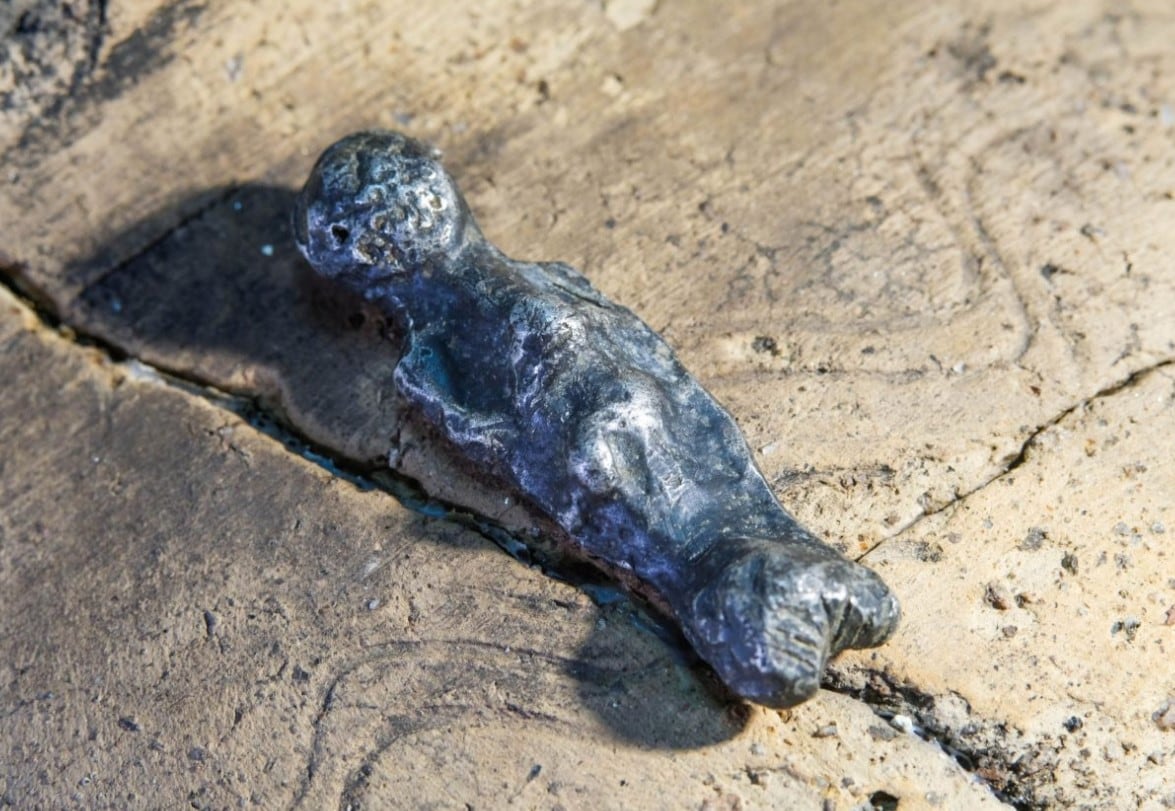Skvělí 
Cooperation between archaeologists and detectorists: an unprecedented early medieval silver figurine on a Slavic
Categories: Nálezy nejenom s detektorem kovů ve východní Evropě
Archaeologists from the Polish Academy of Sciences, in cooperation with detectorists from the Pasja Association, discovered several hundred medievalfragments of pottery, shells, arrowheads and spearheads, as well as a unique silver statue of a man, which is unparalleled at least in Central Europe.
The Slavic fortress Chodlik stood near the present village of the same name between the 8th and 10th centuries. It was surrounded on three sides by water. It was one of the largest fortified settlements of the time. Several burial mounds have been discovered nearby. Geophysical surveys were carried out at selected sites in 2020 and 2021, revealing the underground rectangular shapes of the former structures.
"We wanted to find out if there were residential buildings in the hillfort and to test our knowledge of the final phase of the site," said survey leader Dr. Łukasz Miechowicz of the Institute of Archaeology and Ethnology of the Polish Academy of Sciences. Meanwhile, over the past two seasons, archaeologists have found several hundred artefacts, including military items (arrowheads and spearheads), clothing items and decorations. Among others, a bronze circular pin and a crescent-shaped pendant - a lunula.
"The most interesting find, however, is a silver anthropomorphic figure. It measures about 5 cm in height. The figure has its hands clasped on its chest, perhaps holding something. The depiction of the face is unfortunately indistinct, but the toes are clearly visible," explained Dr Miechowicz. The figurine was found at a depth of approximately 20 cm, at the level of the early medieval cultural layer. Archaeologists have not yet been able to define the purpose of this unique object. No similar figurine has been found so far, not even in publications from other archaeological sites of this period.
The fragments of ceramic vessels date from the 8th-10th centuries, confirming the dating of the settlement according to earlier finds. According to Dr Miechowicz, their large number indicates that the site was very lively: "These finds may be traces of military actions. The Chodel Basin is a strongly fortified settlement micro-region - there are four very close castles, other fortifications in the form of watercourses and embankments. Two important trade routes intersect here. It was certainly a rich and sought-after place," the scientist added.
This year, archaeologists also found two early medieval denarii from the early 11th century on the waterfront in Chodlik. "The new coin finds give rise to a review of the chronology of the fortress and its possible shift to the 11th century. Here we also count on the results of absolute dating using the radiocarbon method," Miechowicz added. Until now, the fortress at Chodlik was thought to have disappeared after the rise of the Piast dynasty. But the reason for its end remains a mystery. Perhaps a natural disaster contributed, perhaps an armed invasion...
Archaeological work at Chodlik has been going on systematically for 60 years. Long-term research has uncovered a number of important monuments, including the largest granary of this period found in Europe. The fortress was strong, probably the most important centre of settlement in the region. It is one of the oldest fortifications of this type in the historical region of Lesser Poland. The Chodelska valley was one of the most important early medieval crossroads. Long-distance routes from north to south and from east to west - from the Bug Basin to Wielkopolska, as well as the Vistula Trail - intersected here.
The archaeologists appreciate the cooperation with the members of the Pasja Historical Society: "Cooperation is fantastic for us, I believe that joint initiatives of archaeologists and detectorists bring only benefits," evaluated the head of excavations Dr. Łukasz Miechowicz. The current research project in Chodlik is made possible by the terThe field research station is located in the building of the former primary school. The researchers are organising a collection to enable the restoration of the old building and its adaptation to the needs of a museum and a place for popularising science.
Roman Němec





Sources: naukawpolsce.pap.pl, lublin112.ppl, archeologia.com.pl
The article is included in categories:









